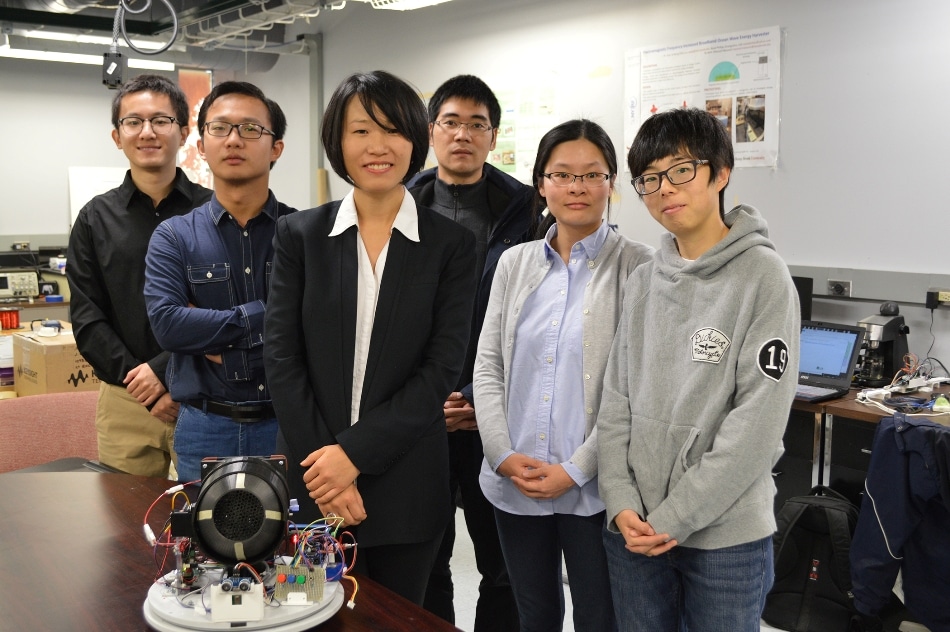Dec 13 2017
At present, photoelectric infrared (PIR) sensors are being largely used for detecting occupancy presence in buildings. The sensors are applied for smart thermostats to regulate cooling and heating depending upon occupancy.
 Ya Wang, center, and her Mechanical Engineering students are testing the SLEEPIR sensor prototype in the laboratory. Credit: Stony Brook University
Ya Wang, center, and her Mechanical Engineering students are testing the SLEEPIR sensor prototype in the laboratory. Credit: Stony Brook University
A main issue is that the PIR sensors have the ability to detect only individuals in motion. Researchers from the Stony Brook University are now working to create an innovative kind of PIR sensor that includes an electronic shutter as well as other technologies that permit precise and quick detection of occupancy of even individuals who are not moving.
The study is headed by Ya Wang from the Department of Mechanical Engineering in the College of Engineering and Applied Sciences. A 3-year, $1 million grant, effective from March 2018, from the U.S. Department of Energy’s Advanced Research Projects Agency-Energy (ARPA-E) will support the study. The innovative PIR sensor device has been named as SLEEPIR: Synchronized Low-Energy Electronically-Chopped Passive-InfraRed PIR Sensor for Occupancy Detection .
According to Professor Wang, the SLEEPIR sensor has the ability to minimize the consumption of energy in residential buildings by nearly 30%. She further stated that the non-mechanical oscillating method is integrated with a state-of-the-art machine learning algorithm to form an “optical chopper” with the potential to momentarily impede heat flow to the sensor, thereby empowering the device to detect not only moving but also stationary individuals. She also stated that her team will assess different strategies for the chopper, for example, low-power liquid crystal technology without any mobile parts.
The team will also adopt innovative signal processing methods and machine learning for the infrared data, which has the ability to interpret differences between pets and people and prospectively between more active as well as sleep states of individuals.